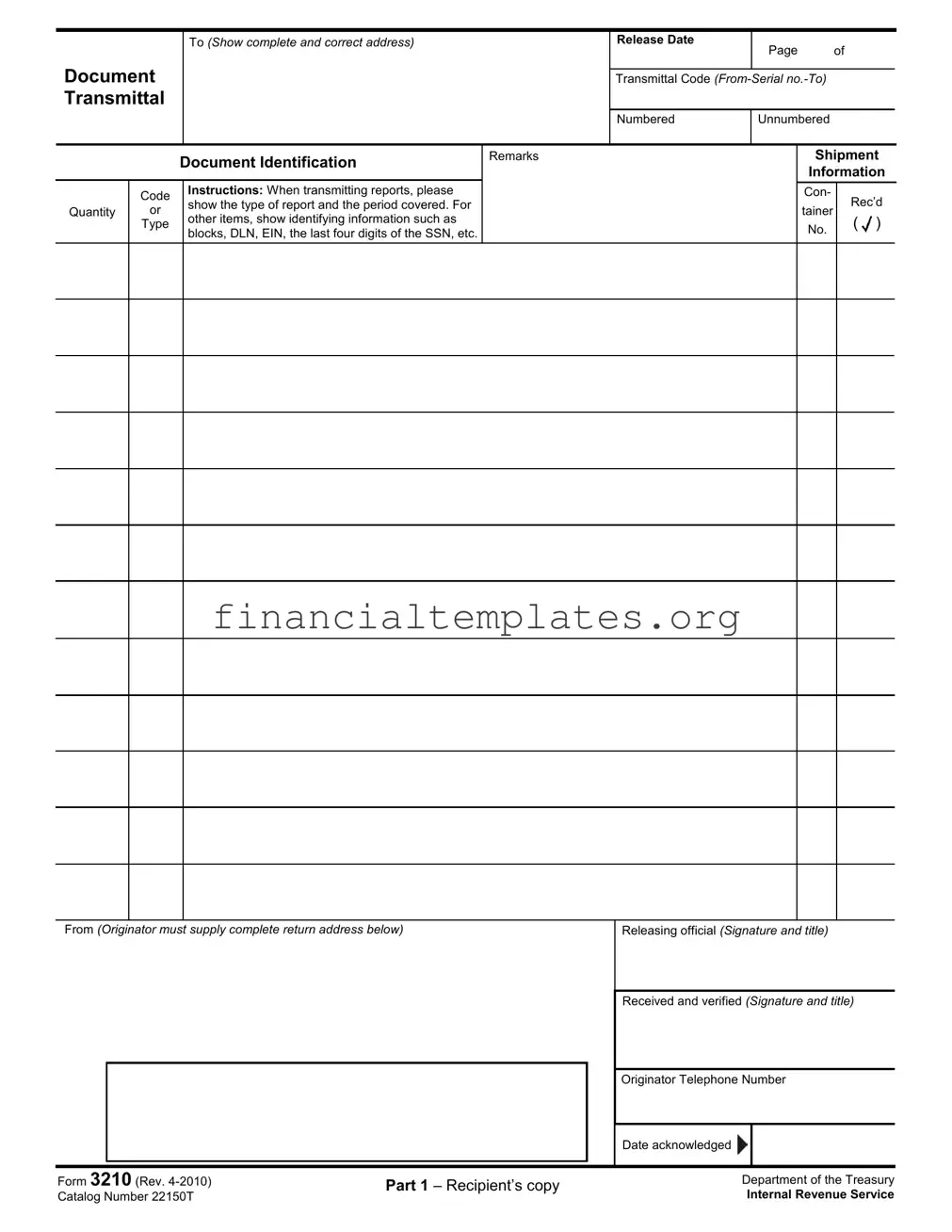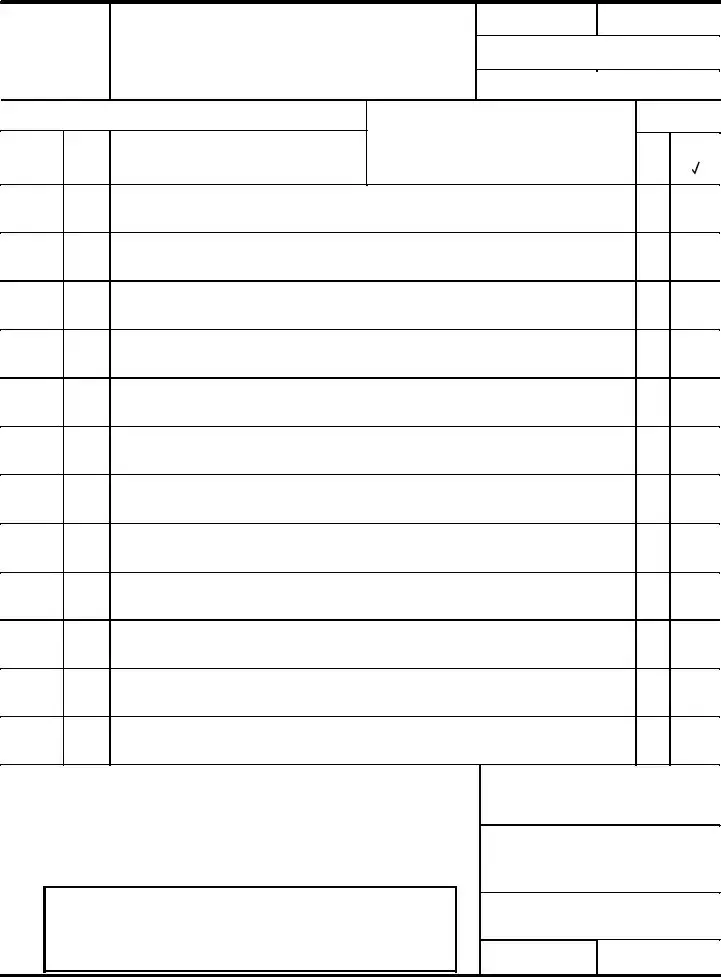The IRS 3210 form, a document used for transmitting reports and other items, bears similarities to several other forms and documents within the context of both government operations and private sector business practices. Each of these documents serves as a tool for communication, record-keeping, or ensuring accountability through the proper documentation of transactions and transmissions.
One similar document is the Form 8821, Tax Information Authorization. Much like the IRS 3210 form, it is used to document the action of granting authority to a third party to access or receive tax information on someone's behalf. Both forms ensure there is a paper trail for the authorization of information sharing, although the IRS 3210 focuses on the transmittal of documents, while Form 8821 specifically authorizes access to tax information.
The Bill of Lading, used in shipping, parallels the IRS 3210 form in its role as a document outlining the details of goods being transported. It includes information about the shipment, much like how the IRS 3210 includes details about documents being transmitted. Both serve as an official record verifying the dispatch and receipt of materials or information, safeguarding against disputes regarding the handling of the items or documents in question.
Form 4506-T, Request for Transcript of Tax Return, shares the concept of requesting documents or information with the IRS 3210. While the IRS 3210 is used for the actual transmittal of these items, Form 4506-T is specifically focused on requesting tax return information. Both ensure accountability and traceability in the handling of sensitive documents.
Memo of Transmittal is a general business document that, much like the IRS 3210 form, serves the purpose of accompanying important documents or reports to provide context or instructions to the recipient. This kind of memo ensures that the accompanying documents are correctly understood and processed by highlighting key points or instructions.
The Packing List, similar to the shipment information section of the IRS 3210, provides detailed information about the contents of a shipment. This helps in verifying that all items listed were indeed packed and shipped, paralleling the IRS 3210’s function of ensuring all documents transmitted are accounted for upon receipt.
Chain of Custody Form is used in legal and medical fields to document the handling of evidence or samples. It is reminiscent of the IRS 3210 in its purpose to meticulously record each transfer of the item or document to safeguard its integrity and prevent tampering or loss, ensuring that every party involved is held accountable.
The Form W-9, Request for Taxpayer Identification Number and Certification, like the IRS 3210, involves documentation and verification, but focuses on the identification and certification of tax information for individuals or entities. Both forms participate in the larger ecosystem of document and information verification within tax and financial operations.
Finally, the Interoffice Memo, often used within organizations, serves a similar purpose to the IRS 3210 by facilitating the transfer of information or documents between departments or individuals. Though less formal, it ensures communication and document transfers are documented, contributing to operational transparency and accountability.
Each of these documents, while serving unique specific purposes, shares the common goal of enhancing transparency, accountability, and efficiency in processes through proper documentation and verification methods, mirroring the values upheld by the IRS 3210 form.




